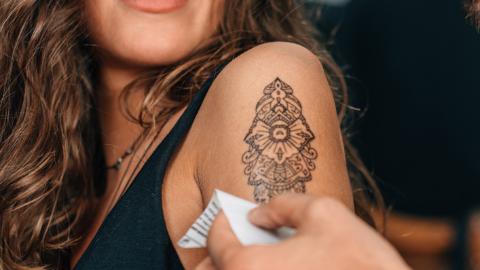
A team of researchers at the Korea Institute of Science and Technology (KIST) have developed flexible high-performance sensors that can be applied to irregular or flexible surfaces such as clothing or skin. They developed a transfer-printing technology that uses an inkjet printer to print a liquid-based nano ink solution onto a porous hydrogel layer. The sensors created can be applied in the same way as a temporary tattoo – the sensor is placed on a surface and the backing material is peeled away, leaving the sensor stuck to the surface.
The amount of nano ink used for this printing process was very small, allowing for the rapid formation of electrodes. Researchers found the electrical performance of the electrodes to be outstanding, due to the high levels of purity and uniformity of the resulting nanonetworks.
The new technology is particularly useful in creating wearable sensors that will attach to surfaces that are thermally or chemically sensitive. Current transfer printing processes are limited to creating sensors that can only be applied to flat surfaces. By creating sensors that can bend and stretch along with varied surfaces like fabric or skin, the range and possibilities for wearables could be significantly expanded.
The KIST team has tested the sensor’s effectiveness by applying the nanoelectrodes to a glove to see how well it detects finger movements and creating a pressure sensor that can measure the wearer’s pulse in the wrist.
“The outcome of this study is a new and easy method for creating flexible, high-performance sensors on surfaces with diverse characteristics and structures,” said Hyunjung Yi of KIST’s Post-Silicon Semiconductor Institute. “We expect that this study will be utilized in the many areas that require the application of high-performance materials onto flexible and/or nontraditional substrates, including digital health care, intelligent human-machine interfaces, medical engineering, and next-generation electrical materials.”
The study was published in the most recent issue of Nano Letters (IF: 12.080, top 5.822% in JCR sector).
